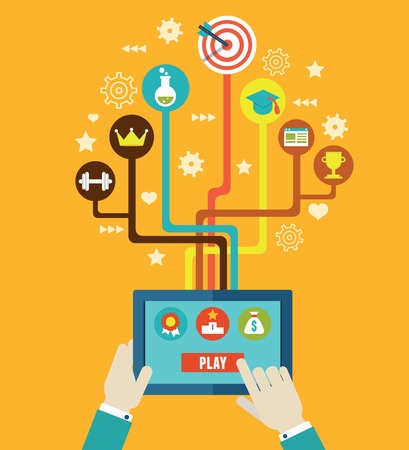
While some parents may view gaming as an affront to their children’s social development, businesses are finding that a combination of social media and gaming—once the milieu of middle-schoolers—could be an integral part of improving employee engagement.
And if getting employees to use internal social networks more is a behavior that’s hard to change, experts said, gaming can act as an incentive.
IDC reports that the global market for social-media platforms will grow from $767 million in 2011 to $4.5 billion by 2016.
That’s because “the use of emergent social-software platforms within companies, or between companies and their partners or customers,” provides rapid and agile collaboration, information sharing and integration between platforms, said Harvard Business School Professor Andre McAfee. Yet, experts said, many companies are finding that their employees are not taking advantage of these newly built platforms.
“The challenge with Enterprise 2.0 is that there is no human element to it. Software is dehumanizing by nature,” explained Chandar Pattabhiram, vice president of Worldwide Marketing for Badgeville. “Employees also ask, ‘What’s in it for me? Why should I change what I’ve been doing for x amount of years? It has worked fine.’ If an employer doesn’t have a good answer to those questions, their employees aren’t going to buy in.”
Experts say the trend is not restricted by a company’s size or its industry. Employees of all levels, races and genders participate in gaming.
“Gamification is definitely universal in that it works across all different industries, can be applied to many different processes and can be used by employees of all levels,” said Michael Idinopulos, chief customer officer at Socialtext. “The challenge is figuring out how a game best works in a specific context to achieve a specific behavior. It is not a one-size-fits-all approach.”
Idinopulos suggests company leaders ask, “What are the behaviors we are trying to elicit?”
The answer to that question help determine the kind of game mechanics to use to achieve the desired behavior. According to Badgeville, there are three mechanics to consider:
- Game mechanics: components of a game that give instant feedback (points, rewards systems)
- Replication mechanics: components of a game that show and promote an individual’s expertise (leaderboards).
- Social mechanics: components that serve as vehicles to connect employees with their peers, and are updated in real-time (comments, “liking” something)
Beat the Competition
Business and competition go hand-in-hand, experts say, and win-or-lose gaming helps spark the desire to be undefeated. Fail to close a sale? There’s a good chance your competitor did not.
Companies also hold contests in which employees compete against their colleagues.
For example: Issuing the challenge “The first five people that tweet ‘#winthecontest’ to @CompanyX will receive a $20 gift card to their favorite store,” is a popular way to engage employees. Sales departments will post the rankings for a given week to enhance their workers’ competitive natures, drive them to beat their co-workers and, in doing so, generate more sales.